What's New
Displaying results 1711 - 1720 of 4052

Resource | Presentations,
Data Hub's newest feature - the mobile application, AIDS Data Hub app - provides key information on the HIV epidemic in Asia and the Pacific. Its main features include Regional overview, Country snapshots, Fast-Track scorecards and link to AIDS Data Hub.
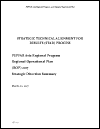
Resource | Publications,
The goal of the PEPFAR Asia Regional Program (ARP) is to catalyze broad, sustained epidemic control by demonstrating effective approaches to reach, test, treat, and retain men who have sex with men (MSM), transgender (TG) women and other key populations in settings with the greatest burden of HIV in China, Laos, and Thailand. To achieve this goal, the ARP works with civil society and government partners to pilot and evaluate innovative interventions and sustainably scale-up effective interventions; supports the establishment of domestic financing mechanisms for non-governmental organizations (NGOs); and works with host governments to systematize the role of NGOs in the health system. The ARP also provides technical assistance and facilitates knowledge sharing to countries in the region and beyond.
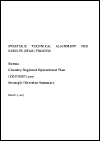
Resource | Publications,
The vision for the President’s Emergency Plan for AIDS Relief (PEPFAR) in Burma for COP 17 is to support the country’s efforts to achieve epidemic control using the “90-90-90” global targets as a framework for HIV program planning and prioritization. PEPFAR in Burma support will continue to focus on technical assistance (TA) and targeted support to improve the cascade of HIV prevention, testing and treatment, especially for key populations (KP) affected by high HIV prevalence and limited access to and low coverage of HIV services.
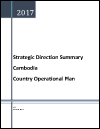
Resource | Publications,
The Government of Cambodia has made significant progress in addressing HIV/AIDS for the past 25 years. In 2013, Cambodia announced its intent to eliminate new HIV infections by achieving the 90-90-90 targets by 2020 and going further to achieve 95-95-95 (and fewer than 300 new HIV infections annually) by 2025 – coming close to achieving an AIDS Free Generation. As of December 2016, Cambodia had diagnosed approximately 83% of the estimated population of PLHIV, placed 97% of diagnosed PLHIV on ART, and had documented viral load suppression on 81% of PLHIV on ART . The exisiting PEPFAR strategy has helped to drive this progress, particularly in ensuring ensuring that PLHIV are placed on ART, retained in care, and receive quality-assured viral load testing.
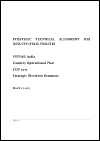
Resource | Publications,
The goal of PEPFAR India's Country Operational Plan (COP 2017) is to catalyze progress towards epidemic control in India, through the demonstration of scalable models for an effective response. PEPFAR continues to partner with the Government of India (GOI) to achieve epidemic control through technical assistance (TA) to the GOI, particularly aimed at identifying and demonstrating high-impact interventions to reach, test, treat, and retain key populations (KPs), which include men who have sex with men (MSM), female sex workers (FSW), people who inject drugs (PWID) and transgender (TG) in geographic areas with the greatest burden of HIV, strengthening laboratory systems and processes, and improving the quality, availability, and use of strategic information.
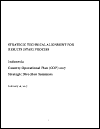
Resource | Publications,
In partnership with the Government of Indonesia (GoI), civil society organizations (CSOs), multilateral agencies and other donors, PEPFAR Indonesia’s focus in COP 17/18 will be to expand support for improved access to and quality of services across the cascade for targeted populations in PEPFAR priority areas of Jakarta and Papua. This includes support to improve data collection, quality, and use to demonstrate achievement of 90-90-90 among targeted populations, in addition to efforts to reduce stigma and discrimination (S&D) and violence against vulnerable populations. As a result of these efforts, PEPFAR Indonesia anticipates achieving results contributing to epidemic control in Jakarta and Jayawijaya over the next two years.
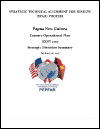
Resource | Publications,
The PEPFAR program in Papua New Guinea (PNG), in collaboration with the leadership of the National Department of Health (NDOH), will focus on key policy-implementation to catalyze and bolster national and provincial HIV, key population (KP) and gender-based violence (GBV) work. The majority of PEPFAR PNG’s program will comprise of above-site with some site-level pilots in support of above-site activities. The program will work to reduce the costs of providing HIV services and increase the sustainability, quality and reach of proven interventions, while also piloting innovations for future scale-up and efficiencies. The PEPFAR PNG program will work with the NDOH to adopt and roll-out new policies for HIV prevention, care and treatment, and prevention and management of GBV.
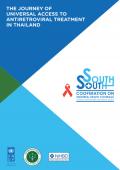
Resource | Publications,
This book represents the consolidated knowledge and experience related to the policies and management of universal access to ART in Thailand. It aims to serve as an important tool to share knowledge with and advocate the policy of universal health coverage (UHC) to policymakers in the other developing nations that are working towards achieving UHC inclusive of the continuum of HIV and AIDS care services.
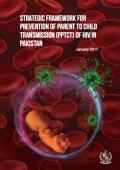
Resource | Publications,
This strategic framework provides a road map to scale-up prevention of parent to child transmission (PPTCT) services in the most efficient manner, where value for money is achieved with the promise that no infected mother will be missed and no child will be born with HIV, where every HIV exposed infant will receive the much needed HIV test at 6 weeks of age, and linked to treatment where required.
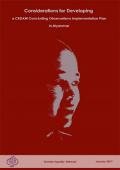
Resource | Publications,
The purpose of this report is to provide contextual background for Convention on the Elimination of All Forms of Discrimination against Women (CEDAW) issues and outline steps for the Government to take as part of a comprehensive Concluding Observations (COB) implementation plan. This report can be used as a building block for a comprehensive implementation plan for CEDAW recommendations as well as for an overall advocacy plan to advance women’s equality. It can also inform decisions regarding establishing advocacy priorities. This report must be considered within the context of gender equality advocacy and strategic planning already being done within Myanmar.





